Nanotechnology continues to revolutionize many industries. Nanotech in the window tinting industry is gaining popularity due to its incomparable performance in blocking the sun’s harmful heat and ultraviolet rays. This technology also transforms Tesla window tinting products by enabling the production of the best quality films for car windows

Table of Contents
ToggleWhat makes a nano-ceramic window tint?
In a nutshell, nanotechnology uses substances broken down into nanoparticles. They are placed in multiple film layers that result in the window tints that are sold in the industry. Molecular science measures them to be one billionth of a meter, and they all work to reduce infrared, heat, and visible light transmission when temperatures are high.
Here are some of the materials that are used to create ceramic window tint films for automotive window tinting in Santa Ana:
Indium Tin Oxide (ITO)
This material enables the most significant visible light transmission (VLT) and heat reduction at high temperatures. ITO is a prevalent chemical in the electronic industry, popularly utilized in optical coatings in LCD, LED, and plasma display panels, among other electronic devices. This chemical is also abundantly used in the window tinting industry.
Indium’s low melting point and stability in a pure oxygen atmosphere with temperatures up to 1600 degree Celsius make it a suitable high-heat reduction material for premium vehicle tint films. Consequently, ITO enables enough visible light transmission (VLT) and reduces heat inside the car. This chemical is also resistant to moisture, making it an ideal material for window tinting products.
Titanium Nitride (TiN)
The first ceramic film in the market was made of titanium nitride. In the 1990s, TiN-infused tint films were the most widely used non-reflective high-heat reduction window film, but its use today is still constrained by its expensive cost.
Antimony Tin Oxide (ATO)
Antimony tin oxide was synthesized and mass-produced in the late 1990s and early 2000s and has various applications in different fields. For instance, in the window tinting industry, ATO is used to reduce static charge buildup.
ATO’s weather-ability, thermoplastic, wear resistance, dispersion, and security properties are also leveraged in the production of window films. Furthermore, this chemical is also used as an alternative to Titanium Nitride (TiN) — ATO produces the same heat reduction properties as TiN and is significantly less expensive.
Ceramic Carbide
In metallurgy, carbide is a compound material usually of carbon and any metal that has lower electronegativity. There are many types of carbide such as tungsten carbide, calcium carbide, titanium carbide, and many more. But as for window tinting, the type of carbide used in tint films is the ceramic carbide.
Ceramic carbide is a strong metal that have high resistance against high temperatures. It is also used in the field of microelectronics, space engineering, and more. When it comes to the Mohs hardness scale, it has the scale of 7.
Because of its excellent infrared reduction properties, ceramic carbide is developed together with other nano-ceramic coatings like ITO and ATO for a more durable automobile windshield.
The Benefits of Window Films with Nano-Ceramic Properties
With the growing variety of window films available, car owners have ample of selections for their vehicles. But many still consider nano-ceramic window tint films. Here are some of the reasons why:
They are non-conductive
Notably, nano-ceramic window tints are not infused with metal particles, guaranteeing uninterrupted GPS, phone, and radio signals. This is one significant benefit of having nano-ceramic window tints installed on car is one thing worth considering.
They are the pinnacle of window tint durability.
Aside from the fact that these products utilize small nanoparticles to block UV rays and solar heat from entering a vehicle, they are also exceptionally more durable than traditional tint films. Nano-ceramic tints are scratch-resistant and is less likely to incur premature wear and tear.
Higher durability is among the capabilities looked for in window tint films. This comes as window tints provide an added layer of strength, decreasing the chances of the window breaking easily. In addition, hardwearing window films and adhesive can prevent shards of glass from hitting vehicle passengers in case of a smash-and-grab or a vehicular accident. They prevent interiors from fading.
Early versions of window tint films often needed more quality control. Many of these films cracked, bubbled, and faded over time, with some undergoing chemical reactions that led to their premature tint installation.
Using nanotechnology in window tints helps to reduce heat and UV rays that can cause damage to interior surfaces. The particles in these coatings can absorb vast amounts of the sun’s infrared and ultraviolet radiation, which are responsible for damaging leather, plastic, and rubber surfaces.
The new generation of nanotechnology-infused window films is a much better alternative than past generations. These new products are more durable than other window tints, offering superior longevity and heat rejection.
They are energy efficient.
Nano-ceramic window films have better heat and glare reduction features compared to standard film products, which means they can greatly help in making a vehicle more energy efficient. As windows tinted with nano-ceramic films deflect more heat and retain coolness inside the cabin, usage of the HVAC systems and fuel is also reduced.
They reduce glare and improve visibility for drivers
Ceramic films imbedded with nanotechnology can block glare that could otherwise impair a person’s visual performance. It can notably reduce the negative effects of sun glare without hindering natural light from entering the vehicle and obstructing the view of the driver.
They make vehicles look better
Timeless, classic, and sophisticated is what most window tint clients want for their car windows. Nano-tint films can enhance a vehicle’s look effortlessly. This, in turn, adds value to the vehicle, which is advantageous for owners considering selling it in the future.
Conclusion
When it comes to window tinting, opting for nano-ceramic window tints will always be the best investment for your vehicles. The future of window tinting is headed toward giving its clients the best protection and comfort. And there’s no better time to get that offer than now.
Visit us at www.octintz.com and avail yourself of the valuable one-time investment for your window tinting needs. Call us at 714-485-6121 for an appointment or to get a quote.



